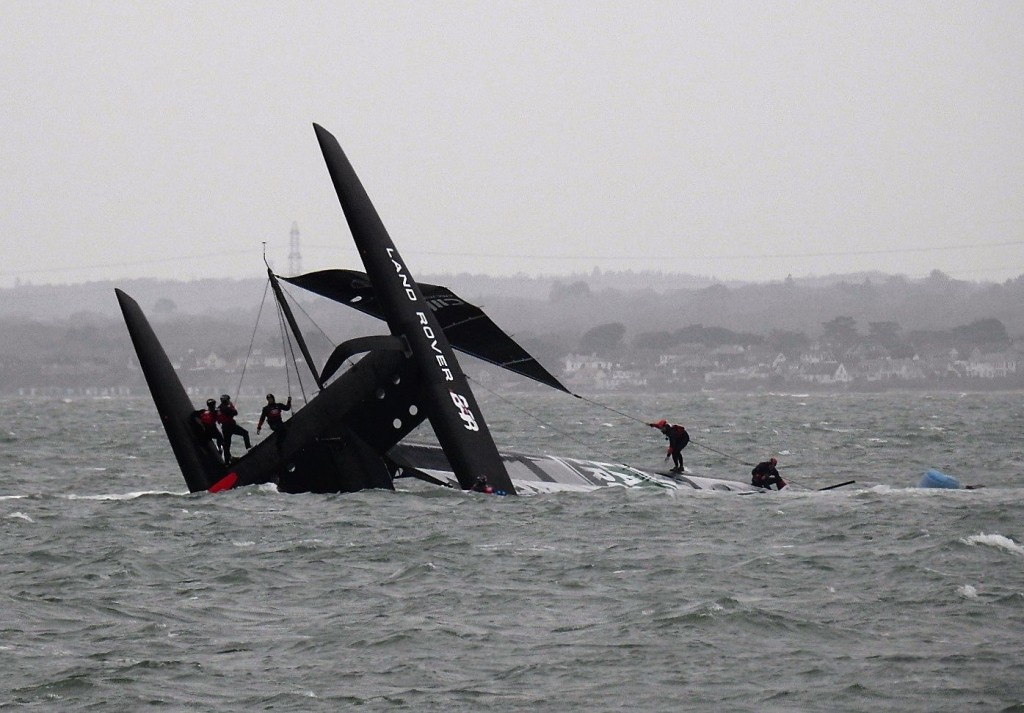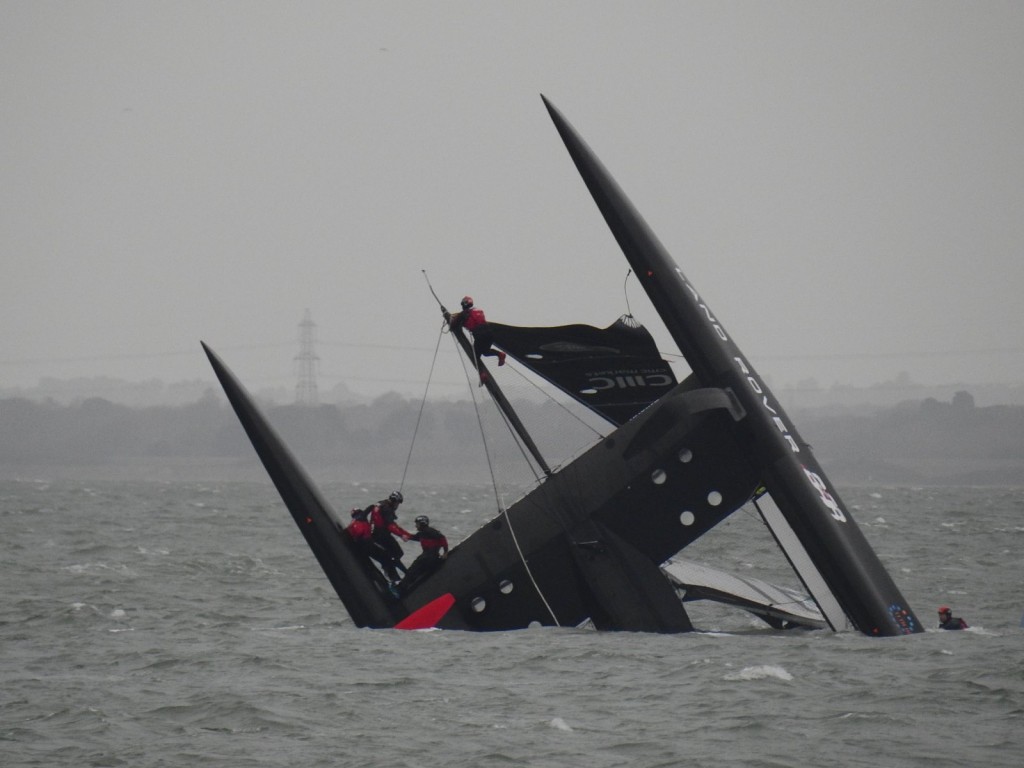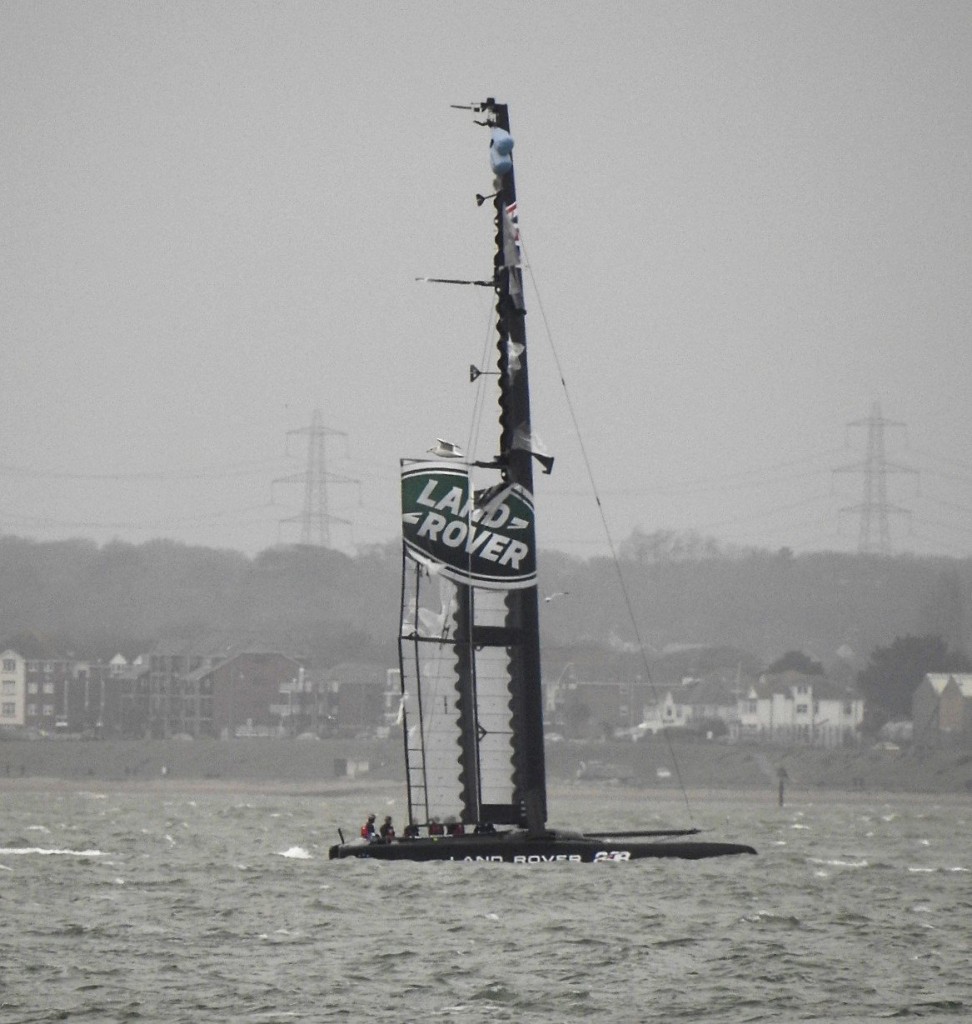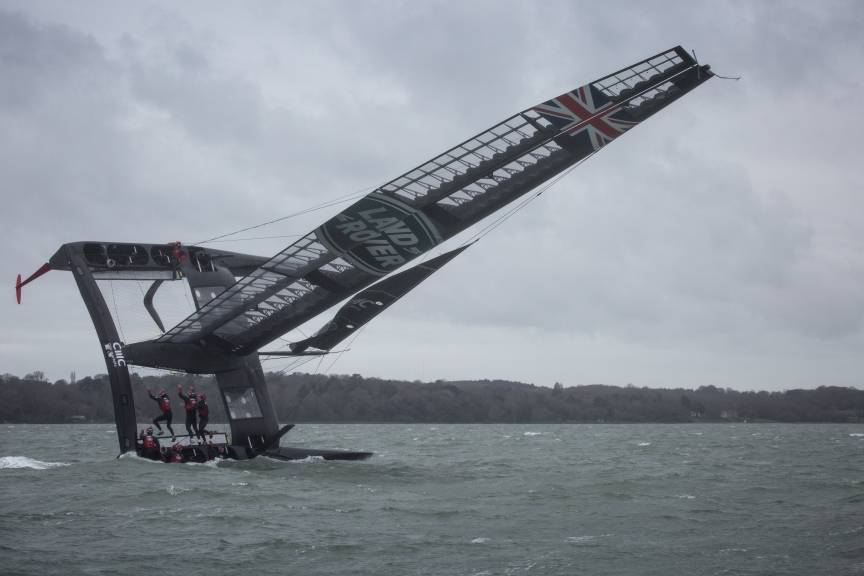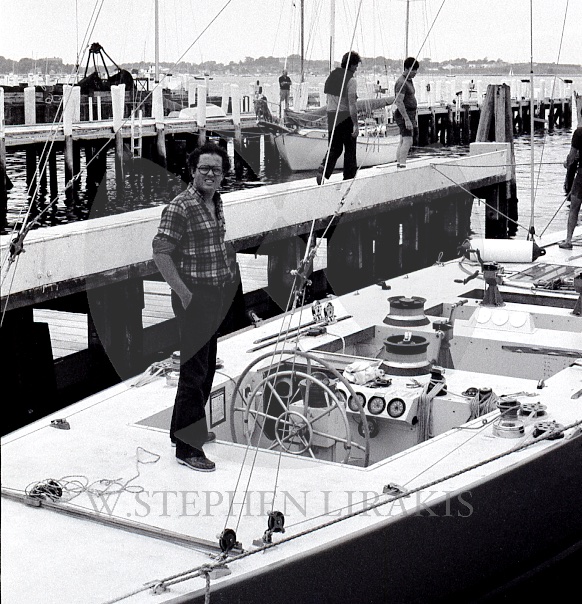
Luna Rossa Swordfish and Luna Rossa Piranha both on the water. The future is foiling – AC45s to be modified; America’s Cup World Series to continue into 2018
Guilain Grenier
The Challenger of Record, long time America’s Cup competitor, Luna Rossa have threatened to withdraw from the America’s Cup if the mooted Protocol change to a smaller boat is implemented.
Emirates Team NZ, via social media, say they have supported the Italian stand against the boat change. ‘Emirates Team New Zealand agrees with Luna Rossa Challenge . It would be unfair to change the rules at this stage unless all America’s Cup teams agree to do so.’ says a statement on their Facebook page, today.
The previous day the Team wrote:’ the idea of boat size reduction is not new. Emirates Team New Zealand suggested this last year. Since then time has passed with teams well advanced in their design process now and any ideas around change will need the full consultation and support of all the teams.’
The latest Kiwi stance pits the two longest standing teams in the America’s Cup against two first time teams, plus Artemis Racing and the Defender.
Contrary to other media comment the Protocol Amendment is for a new class of boat – in the 47 to 54ft range, and not a foiling AC45 as has been suggested.
The initiative for the change is believed to have come from Larry Ellison as part of a move to make the America’s Cup more sustainable and for the class to be adopted by the teams for future America’s Cups and avoid the boat changing that has marked the more recent editions.
Initially both Oracle Team USA and Emirates Team New Zealand backed a move to a smaller boat (AC54) after the AC62 had been announced, and the discussion has been ongoing at the last two or three Competitor Meetings for the 35th America’s Cup.
The new AC5X rule is being drafted by the same group that produced the AC62 rule and is expected to be just a scaling of that rule.
At this stage there is no indication of how the Nationality rule will be applied, which requires two of the eight crew to be either Nationals of the country of the club of the team, or have passports for that country. The minimum number was initially set at 25% of the crew which neatly transposed to two crew members when the AC62 had eight crew. It is expected that the crew size will reduce to six, but that the Nationality requirement will remain at two nationals.
Earlier today Luna Rossa issued a media release stating:
Team Luna Rossa Challenge is distinctly opposed to the proposal – announced today on the official web site of the America’s Cup – to change the Class Rule for the 35th America’s Cup and therefore the boat that was previously accepted by all challengers on June 5th 2014.
Luna Rossa does not believe that a sporting event should be disputed in a courtroom and does not intend to initiate a lengthy litigation process that would only bring prejudice to the event.
If the principle of unanimity of all challengers required to change the Class Rule were not to be respected Luna Rossa will be obliged to withdraw from the 35th America’s Cup.
Team Luna Rossa trusts that the Defender will quickly announce a public clarification, also to avoid jeopardizing the organization of the America’s Cup World Series – Cagliari – Sardinia event planned to take place from June 4 to June 7, 2015.
Contrary to statements issued by one team, Changes to the Protocol only require the consent of the majority of the teams together with the Defender, Golden Gate Yacht Club or their commercial arm America’s Cup Events Committee.
After the withdrawal of the initial Challenger of Record, Hamilton Island Yacht Club, Luna Rossa stepped into the role as the next to challenge.

Patrizio Bertelli spells out his view of the 2013 America’s Cup in Auckland in October 2012
The Italians magnanimously waived their effective right of veto of change under the Protocol, instead ceding that right to the majority decision of the Challengers, of which there are currently five.
Given that three of the Challengers – two of which are first time Challengers – have indicated their support for the move, it could be a done deal, unless cooler heads prevail.
Had the Italians not given away their effective right of veto, they would have had the ability to stop this move dead in its tracks, now they are locked into the decision of the majority – two of which are first time challengers. Artemis Racing sailed just four races in the Challenger Rounds for the 34th America’s Cup.
The first of the America’s Cup World Series events scheduled for Cagliari, Italy for early June would probably not proceed without the support of Luna Rossa.
In a further legal complication the mooted change may also fail on other grounds in the Protocol, which required the Defender to publish the AC62 Class Rule prior to the opening of the Entry Period, and having published this Rule, and met this deadline, it would require regatta organisers to re-write history to give effect to the proposed change in boat.
A clarification of the matter is expected by the end of March, with a further Competitor Meeting being held on Tuesday.
The dispute cannot be resolved by the Arbitration Panel for the 35th America’s Cup, as none has been appointed. The issues between Cup organisers and the International Sailing Federation also appear to be unresolved.
The 35th America’s Cup is due to be sailed in just 27 months, with the first event in the America’s Cup World Series scheduled to take place in just three months. The date and venue pf the Qualifier series, which in turn triggers the launch date for the AC62’s has not been formally announced.

